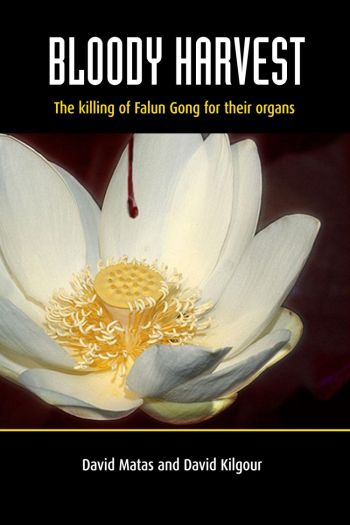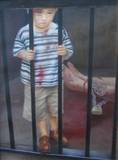China faces up to the horrible truth about its Mao-made economic disaster
Posted by Author on January 3, 2008
John Garnaut, The Age, Australia, December 27, 2007-
WU JIHUAI turned 46 this year and has lived his life in a poor village called La Pa in China’s poorest province, Guizhou. Those facts are enough for a thoughtful Chinese person to deduce that he comes from a privileged family and is lucky to be alive.
Wu’s uncle, Liao Zhengxue, 59, remembers that one in three of La Pa’s 300 residents starved to death in 1960 and 1961. First were the elderly, followed by young girls, young boys, men and finally women.
“Anyone over 50 just vanished,” says Liao. Survivors still laugh about how strange they looked, with their emaciated limbs and stomachs distended from eating dirt.
The most common estimate is that China’s Great Famine killed up to 30 million people, making it the worst in history.
Wu, now a village leader and informal Christian preacher, was malnourished and grew up shorter than he should have. But no one in his family died and he is keen to move the conversation on.
Like many famine survivors, he seems to carry a hint of embarrassment, or perhaps guilt. He was born into a famine that no local baby survived – except those with parents who had Communist Party connections and privileged access to food stores.
Nobel laureate Amartya Sen makes the point that there is no such thing as a natural famine. But some are more man-made than others. At the top of the list is Mao Zedong’s insane attempt to turn China quickly into an industrial and agricultural powerhouse.
In November 1957, Mao said China would overtake Britain’s steel production within 15 years – at a time when China was producing 5 million tonnes of steel a year compared with Britain’s 40 million tonnes.
The following March, Mao’s acolytes said China was entering a period of time compression in which “a day equals 20 years”. In May, Mao’s 15-year timetable was reduced to seven, and by September it was down to one.
To chase their steel production targets, peasants abandoned their harvests and melted their sickles and woks in backyard furnaces. Officials reported that grain production doubled in 1959, when in fact it fell by a quarter. The Communist Party siphoned grain from the countryside, starving peasants were barred from leaving their foodless villages, and Mao’s “Great Leap Forward” ran unchecked for three more years because honest and sensible officials were purged.
There are many Chinese who still blame the weather, or the Russians for withdrawing their aid. The Mao-made calamity is still known by its euphemism, “the three-year natural disaster”.
Much remains airbrushed from public discussion, but Chinese scholars are slowly burrowing into the truth of the Chinese Communist Party’s darkest moment.
Historian Yang Xianhui has published two harrowing accounts from his home province of Gansu. One details how 3000 political prisoners – “Rightists” – starved to death in a labour camp. The other describes the dying in Gansu’s orphanages. Both books are available in Chinese bookstores.
“It is important for children to know this history so we never repeat this past,” he says.
As is often the case in China, economists have been given more latitude than others to investigate some of the most politically sensitive questions.
Peking University’s Professor Justin Lin’s 1998 study pinned responsibility on the Communist Party’s state and urban-biased food rationing system, as well as farm policy failures. Provocatively, the paper was entitled The causes of China’s agricultural crisis and the Great Leap Famine.
Lin is not a Communist Party member but is tipped for promotion to a minister-level post in the new year.
Most recently, Chinese and American economists have run their models over modern census data to reconstruct famine death rates, which rose in 1959, peaked in 1960 and remained high in 1961.
Douglas Almond, Lena Edlund, Li Hongbin and Zhang Junsen looked at the people who were born or should have been born in the period. It turns out the cohort born in the famine years is 25% to 50% smaller than it should be, compared with the preceding and subsequent cohorts.
Not only did millions of infants die or fail to be conceived, but famine babies who survived grew up to be physically and mentally less capable.
“Women born in high-famine areas had larger increases in disability rates and larger reductions in house sizes,” says the paper, Long-term effects of the 1959-61 China famine, published by the National Bureau of Economic Research.
“For men, differences in literacy, work status, disability, and house size correspond to famine severity.”
History’s worst economic policy failure is mapped into the biology of Chinese people aged 46, 47 and 48. It is a ubiquitous reminder of what the Chinese people once endured, and why post-Mao China is a more satisfied place than many outsiders expect to find it.
Wu Jihuai, in La Pa village, is not ready to concede that life is better now than it was. He had nowhere to deliver his Christmas Eve Service because his church was drowned by a hydro-power project 10 years ago, along with his most fertile land. “Our best corn-growing land was down on the river bank and we received nothing for it,” he says.
Still, Wu’s three sons are now earning money in coastal factories and they sent 1000 yuan ($A156) home this year. Some of his fellow villagers receive a modest new social security payment. A road has just been bulldozed in from the highway, which means they no longer have to take a boat across the lake and walk over mountains to get to town.
The Communist Party is still authoritarian and often callous in the way it treats its citizens. But its propaganda machine is gradually making space for intellectual disciplines such as economics and history.
La Pa remains dirt-poor but it is no longer quite so desperate. Another famine is inconceivable, perhaps for the first time in a thousand years.
– Original report from The Age
Rate this:
Share this:
- Click to email a link to a friend (Opens in new window)
- Click to share on Twitter (Opens in new window)
- Click to share on Facebook (Opens in new window)
- Click to share on Tumblr (Opens in new window)
- Click to share on Pinterest (Opens in new window)
- Click to share on Reddit (Opens in new window)
- Click to share on LinkedIn (Opens in new window)
- Click to print (Opens in new window)
Related
This entry was posted on January 3, 2008 at 1:24 am and is filed under Asia, censorship, China, disaster, Economy, Environment, Food, Guizhou, history, Life, Mao Zedong, News, Official, People, Politics, Rural, Social, SW China, World. You can follow any responses to this entry through the RSS 2.0 feed. Both comments and pings are currently closed.
Sorry, the comment form is closed at this time.





